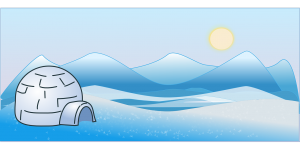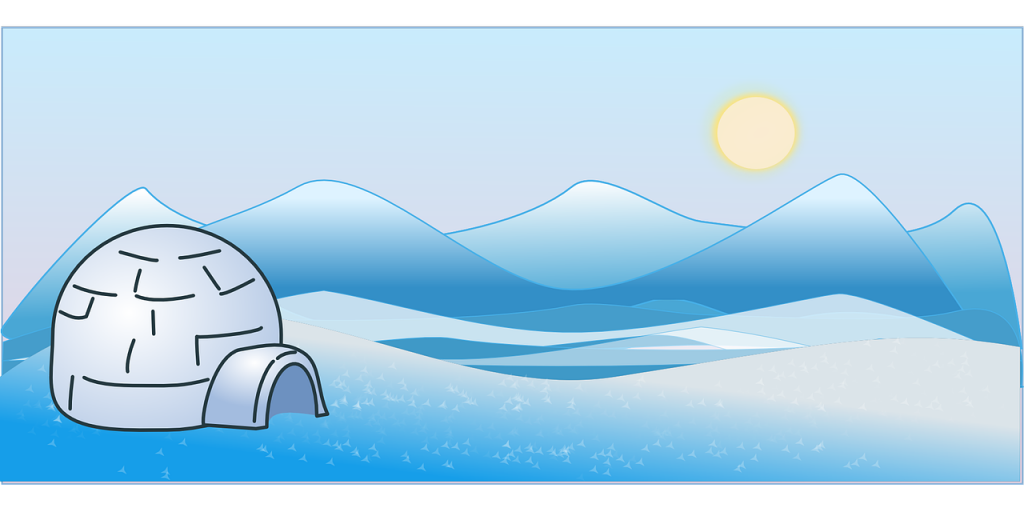Running in the super-cold
 Surviving the polar vortex
Surviving the polar vortex
Each year in New England we get a couple extraordinarily cold winter days. Many choose to stay indoors and either skip their runs or ply their miles on the treadmill.
I run and race outdoors through these cold times. I am of the opinion that there is something ‘character building’ to braving the cold. I’m living proof that it won’t kill you, cause digits to freeze or burn your lungs out.
I’ve raced 20 milers at 0 degrees Fahrenheit with a stiff breeze. It’s not ideal. It’s not comfortable. But it is definitely realistic and well within the operating parameters that humans are designed for.
Getting out and completing this kind of long run against the elements gives you a certain mental confidence that you can overcome anything. This is part of your training. Especially if you are training for the Boston Marathon in New England. You train through January, February and March in the cold, wind, snow and rain. This strength of training builds the bedrock of your physical and mental confidence for Patriot’s Day.
That being said there is a point where the cold becomes more than cold. For me this is typically below 15 degrees Fahrenheit. When the temperature drops below 15 and into the single digits it is a new kind of cold and things operate differently.
The first thing you notice is that commercial grade plastics cease to be quite so plastic. This means things like headphone cables and running shoe outsoles stiffen up and lose their flexibility. Items are more likely to crack, break and just generally malfunction when you pass that cold line.
If you train with a phone it too will cease to function below a certain temperature. Unless I keep it close to my body my iPhone just shuts down when it gets this cold. My Garmin watch seems to have a stronger constitution and I’ve never had trouble with it. Be aware that your electronics and anything with a touch screen may just stop working at a certain temperature and batteries tend to die twice as fast.
Likewise any fluids you are carrying with you will freeze. The nipple valves on you plastic bottles or hydration packs are the first to go – clogging with ice and becoming dysfunctional. Then the fluid in the containers themselves will turn first to slush then to ice. Below zero this will happen within the first 40 minutes.
You can postpone the inevitable by using hot water in your bottles, but eventually they will freeze. The smaller the bottle the faster it will freeze. The same is true for any energy gels or bars. The only way to combat any of this freezing is to have the items inside your clothes, close to your body.
When you dress for the ultra-cold weather you need special considerations. You want to, above all else, keep your core warm. This can be done with 3-4 layers of technical, wicking fabric. You still sweat in the cold weather and you want the moisture to move away from your core.
The outside layer should be some sort of insulating sweater or jacket that has wind-blocking capabilities. It still has to breathe because you don’t want moisture trapped inside, but it must keep your core warm. Windproof vests are good for protecting the core and still allowing breathing.
The next thing you have to think about is your head and face. In these bitterly cold days any skin exposed to the weather may burn from the cold. You need to cover as much of your face as possible, while still being able to breathe. Slather some petroleum jelly on your nose, ears, cheeks, lips and anything else that might be exposed. This thin layer of grease can make the difference between cold burns and comfort.
Balaclavas work well to cover the face and neck. Hats with chin straps are good too. I usually will go with a large winter ski hat and a scarf tied around my neck and lower face. Sunglasses will protect your eyes and the surrounding areas not only from snow-glare but also from you lashes freezing shut.
You breath contains water vapor. At such low temperatures it will flash freeze as you exhale. Your balaclava or scarf will become stiff with ice. It’s uncomfortable but it won’t hurt you. If you have facial hair you will grow large chunks of ice in it. Again, it’s more of an annoyance than a hazard.
Gloves are another special consideration at this temperature. You normal running gloves won’t cut it at these temperatures. I switch to a pair of standard winter gloves that I might use for shoveling or snow-blowing. Typically your fingers will be ok as long as you keep you core warm and keep moving. It will be a challenge to do any fine motor skills with your hands, so forget messing with your phone and stay warm.
For the lower part of your body usually thick, winter tights will do the trick. You might consider running pants as well but I find that too constraining. You might want to consider wearing thicker socks, or shoe-caps to cut the wind. Maybe opt for shoes with a softer outsole, like trail shoes. Toes are also a great place to liberally apply a layer of petroleum jelly for insulation purposes.
One place you might want to invest is in a good winter jock strap or undies. Alternatively, just double up on your undergarments or wear a pair of bike shorts over your tights. You private parts will also thank you for a liberal application of petroleum jelly.
Regardless of what you end up wearing you still sweat. The sweat will wick to the outside layer and freeze. You may end up basically being encased in a benign ice-shell. This is perfectly ok. The ice on the outside is another form of insulation. It is a protective sweat-shell, and as long as it’s not up against your skin, you’ll be ok.
If you have the courage or, perhaps, poor-decision-making skills, to get out on these days, even after all the preparation, it’s harder to run. Your body is just working harder on these runs. I don’t know the science but from experience it feels 20-30% harder. Some good news is that you end up burning more calories. At the end you end up physically exhausted from fighting the cold but it is a hell of a workout.
It’s ok to run in the super cold. You won’t die. You won’t freeze your lungs. You will get a tough workout in and you will build some ‘nothing can kill me’ confidence.
I wouldn’t recommend any kind of speedwork if you can avoid it in this weather. Your lungs will be ok at normal long-run effort levels, but if you start breathing hard it’s going to hurt. Yes, you will get that infamous cold-burned lungs that people are always nagging about. It won’t kill you or permanently harm you but you might feel like you smoked a pack of unfiltered cigarettes.
The cold weather is harder on your legs as well. You’ll feel it in your joints when you’re done. It’s a combination of the surfaces and shoes being stiffer and the cold itself hindering normal joint function.
When you watch the weather they will always talk about wind-chill factors. It’s true that the wind can make it feel a lot colder. Especially your face and hands or any exposed skin. Truly, some of that wind-chill speak is just fear mongering. You can find sheltered routes to stay out of the worst of it.
One thing they don’t talk about is sun-warming. Even the weak winter sun can significantly warm up perceived temperature on a cold day, especially if you are wearing dark clothes. Try to get out when the sun is out.
As I write this I realize how nuts and unnecessarily masochistic it all sounds. But there is something inherently worthy in your training when you rise to the tests that mother nature throws at you. It makes you stronger.
We got out last Sunday morning in the midst of the cold snap. The polar vortex of air from Siberia brought the temperature down to minus 9 when we started. We toughed it out for 2 hours and it was zero when we finished.
As runners and endurance athletes we are in the business of doing things that other people think are impossible. Things that are entirely outside the normal frame of reference. We look at these things not as impossibilities but opportunities to be tested. That’s the kind of day where you know you were called to task and you passed the test.
You carry that mental strength with you.


Sooo beautifully written, really motivated me.
Thanks